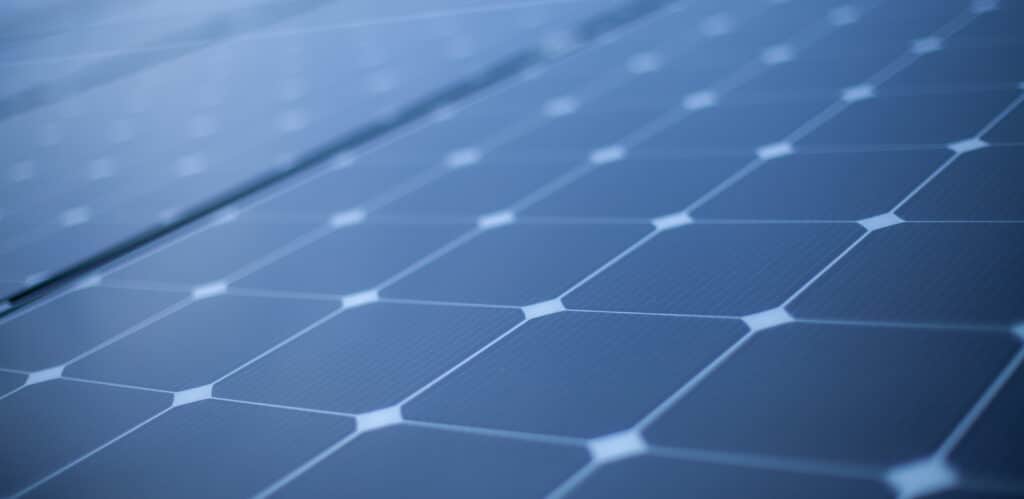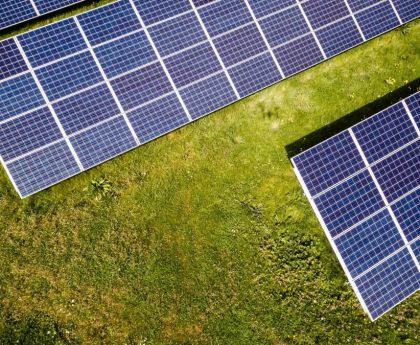Off-Grid vs. On-Grid Solar Systems
You can utilize solar power through off-grid or grid-tied (or on-grid) systems. Although both systems technically work the same way, the difference lies in whether you connect your panels to the local electricity grid. While off-grid systems still use solar panels to produce energy, they rely on batteries to store excess production rather than sending it back to the grid, as with a conventional (or grid-tied) home solar system. You can use that stored energy to power your devices in remote locations.
Grid-tied systems are more common today since the majority of the population lives in the coverage area of an electric grid. However, off-grid solar is often the only option if you plan to power a cabin in the woods, a recreational vehicle (RV) or even boats.
Pros and Cons of Going Off-Grid
Off-grid solar is swiftly becoming popular, especially among outdoor and do-it-yourself (DIY) enthusiasts. However, going off-grid comes with pros and cons.
Pros of Off-Grid Solar
- Creates access to usable energy regardless of grid coverage
- Easier to set up than standard solar systems (no permits or regulatory requirements)
- Ready-to-install kits eliminate the need for an electrical contractor (in most cases)
- Portable solar panel options
- Offers flexible applications (can be used on a tiny house, campervan, boat, etc.)
- Smaller in size and cheaper than conventional systems
Cons of Off-Grid Solar
- Solar batteries are almost always necessary
- You cannot benefit from net metering and other financial incentives
- Large systems can be difficult to set up (most DIY kits are small in size)
What To Look For in an Off-Grid Solar System
There are a few factors to consider when shopping for an off-grid power system.
- Your energy needs: Your system needs to generate enough energy to offset your consumption. You can estimate your energy usage by totaling the expected loads of each appliance and electrical device you plan to run, or you can use an online solar calculator.
- Cost and kit: Try to find a balance between the cost of a kit and its features. Look for higher efficiency, smart features and reasonable pricing.
- Installation: The best kits are simple to install. You can look for kits that are “plug-and-play” by design. Each kit should also come with a detailed solar installation manual.
- Batteries and storage capacity: Look for modern, high-efficiency batteries, preferably lithium batteries. Also, the higher a battery’s storage capacity, the longer you can run your devices and appliances.
- Additional equipment needed: A proper system needs more than just solar panels and batteries. Look for kits that come with all the necessary equipment bundled together, including cables, cable ties, connectors, etc.
- Warranty on the kit: As a general rule, the longer the warranty on any solar product, the better. The industry standard is a 10-year product warranty for panels and a 25-year performance guarantee.
Renogy 400 W 12 V Complete Solar Kit
- Our rating: 5 out of 5 stars
- Cost: $1,700
- Power output: 400 W
- Warranty: 5-year material and workmanship warranty and 25-year performance guarantee
Renogy is popular among off-grid enthusiasts for offering solar kits that combine reliability and affordability. The 400 W kit includes everything needed for an off-grid solar array of this size, including four high-efficiency, monocrystalline solar panels and two 100 amp-hour batteries for ample energy storage (you can pick between AGM or lithium-ion batteries).
The kit also includes modern controllers with digital displays, a basic but reliable 1,000 W inverter, and all the necessary cables, fasteners and connectors. Renogy claims this unit can generate up to 2 kilowatt-hours (kWh) each day — sufficient for a small cabin or a camper.
What’s included:
- 4x 100 W monocrystalline solar panels (compact design)
- 2x 100 amp-hour batteries (AGM or lithium-ion phosphate)
- MPPT charge controller
- Inverter
- Bluetooth modules (for performance monitoring)
- Battery monitor with shunt
- System fuses, branch connectors and cables
- Mounting equipment
Why we picked it: Renogy’s complete off-grid solar kit offers affordable pricing at less than $5 per watt. Plus, it offers some of the best solar panels on the market — with solar cells that can reach up to 22% efficiency. We also like how comprehensive this kit is, with every small component included.
To learn more: Visit Renogy’s official website.
altE Off-Grid 300 W Base Kit
- Our rating: 4 out of 5 stars
- Cost: $1,195
- Power output: 300 W
- Warranty: 5 years for solar panels and 10 years batteries
altE’s base kit comes in a handy 300 W size, which includes two monocrystalline solar panels and offers unique customization options. You can choose between an AGM battery or a lithium battery. If you want to install a more permanent system, you can also choose between roof-mounting or pole-mounting racking equipment.
The kit is quite affordable in its basic form, costing just over $1,100. altE also rightly calls it a “cabin kit” since it is a perfect fit for small-sized off-grid cabins.
What’s included:
- 2x 150 W monocrystalline solar panels
- PWM charge controller
- Inverter
- Combiner box
- Connector cables, surge protection device, mount breakers and other components
- Optional battery bank (AGM or lithium-ion)
- Optional mounting equipment
Why we picked it: The altE 300 W Base Kit offers essential solar equipment (batteries not included) and mounting options to power your cabin. Its monocrystalline solar panels and AGM and lithium battery add-on options offer modern technology for reasonable pricing. But the best highlight of this kit is its customizability, especially with roof and pole mount racking options.
To learn more: Visit altE’s official website.
Goal Zero Yeti 1000X + Boulder 200
- Our rating: 4.5 out of 5 stars
- Cost: $1,795
- Power output: 200 W
- Warranty: 2-year product warranty
Goal Zero is considered one of the best portable solar product companies. Its robust, high-quality solar panels and generators have taken the off-grid world by storm. The Yeti 1000X and Boulder 200 briefcase combo offers a rugged, portable off-grid kit for those who need power on all sorts of outdoor adventures.
A foldable, briefcase design makes your solar panels easy to carry and store. And the solar generator comes with an integrated battery, inverter and ready-to-use ports.
What’s included:
- Power station
- 2x 100 W briefcase solar panels
- Solar panel carry case
- 120 W power supply
- Combiner and extension cables
Why we picked it: Goal Zero’s kit offers exceptional simplicity of use along with incredible portability. It eliminates excess connectors, cables and all the effort needed to wire a system. You simply plug the panel cable into the generator, and it charges the battery. Similarly, you can just plug your appliance directly into one of the generator’s ports, like using a wall unit.
To learn more: Visit Goal Zero’s official website.
WindyNation Complete 100 W
- Our rating: 3.5 out of 5 stars
- Cost: $644
- Power output: 100 W
- Warranty: 5 years for solar panels, 1 year for all other components and a 25-year performance guarantee
If you don’t need to run a dozen appliances on your solar kit, WindyNation’s 100 W package offers a basic output without breaking the bank. The kit comes with a 100 W monocrystalline solar panel, an AGM battery, a pure sine wave inverter and other miscellaneous components.
The kit has no smart components or outstanding features, but it manages to compile all the minimum necessities into one affordable package.
What’s included:
- 1x 100 W monocrystalline solar panel
- 1x 100 amp-hour AGM 12 V battery
- Charge controller with an LCD display and user adjustable settings
- Inverter
- Solar and battery cables
- Solar mounting hardware
Why we picked it: Not all buyers are looking for a full-fledged system that can run fridges, TVs and other appliances. The WindyNation 100 W kit can power a few lights and a fan for a small cabin or boat. It is also easy to connect and relatively inexpensive.
To learn more: Visit WindyNation’s official website.
Eco-Worthy 4800 W 48 V Kit
- Our rating: 4 out of 5 stars
- Cost: $9,900
- Power output: 4,800 W
- Warranty: 3-year product warranty
Not everyone needs a small off-grid kit —some people may need enough power to sustain a large cabin full of modern appliances. Eco-Worthy’s 4,800 W kit offers plenty of power to keep a modern cabin running continuously. This system is so well-specced that it can provide backup power to run your whole house for a few hours.
While typical grid-tied solar systems with batteries often cost tens of thousands of dollars, this kit bundles everything into one neat package for less than $10,000.
What’s included:
- 24x 195 W monocrystalline solar panel
- All-in-one inverter and MPPT solar charge controller
- 4x 50 amp-hour 48 V lithium batteries
- Cables, connectors and other wiring components
- Mounting brackets
Why we picked it: Eco-Worthy’s off-grid home solar kit bridges the gap between smaller kits and full-fledged solar systems without costing a fortune.
To learn more: Visit Eco-Worthy’s official website.
Main Components of an Off-Grid System
While specific components will vary by company, most off-grid solar system kits include the following:
- Solar panels: The most important component of an off-grid solar system is the solar panels. Also known as photovoltaic (PV) modules, solar panels convert sunlight into electricity, which then flows through your system’s wiring and provides power. There are different types of solar panels, including monocrystalline and polycrystalline, for home and off-grid applications.
- Inverter: Most household appliances operate on alternating current (AC), while solar panels generate direct current (DC). An inverter converts the DC power from your panels and battery into AC power, which allows you to use solar energy for your appliances.
- Battery: Batteries store excess energy that your panels generate during the day to supply electricity at night, on cloudy days or during power outages. While all batteries store energy, different types of batteries (such as lithium-ion or lead-acid batteries) are suited for different solar needs.
- Solar charge controller: Power flowing from your solar panels to the battery can fluctuate, reducing your battery’s charging efficiency and even lowering its usable life. A charge controller optimizes the incoming current and voltage, boosting efficiency and safeguarding battery cells. It can also prevent your batteries from overcharging.
- Miscellaneous components: Any solar power system requires several small components to operate correctly, including cables, nuts, bolts, connectors, fuses, etc. These components are sometimes known as the Balance of System (BoS).
The Bottom Line
Off-grid solar systems offer an excellent power source when you don’t have access to the grid, making them popular among campers and people looking to power tiny homes or cabins. They are also a great way to power appliances in an outhouse or food truck, helping to lessen your reliance on a traditional utility company.
There are dozens of off-grid kits available on the market, each offering a different set of component specifications and features. No single kit is the overall best — you will need to consider specific parameters depending on your needs.
For instance, the Goal Zero bundle is a superb option if you plan to connect, disconnect and move your system. Similarly, the Windynation 100 W is perfect for someone looking for a very basic kit costing a few hundred bucks. Alternatively, the Eco-Worthy 4800 W kit is a good choice for larger applications that require maximum power or home battery backup.
Ultimately, the most important thing is to understand your own requirements, then narrow down a few options and choose based on system features, warranties and cost. If you are looking for a more permanent solar option, check out our guide to the top solar companies for residential use.
This post was originally published on 3rd party site mentioned in the title of this site






